My school in Kuala Lumpur turned 117 years old on January 18 and old boys were sending messages and photographs on Facebook and WhatsApp, remembering being part of the story. All the time I was at St John’s Institution, from 1960 to 1972, I never heard of Jean-Marie Beurel, without whom we might never have had that school.
There were plenty of stories of the Christian Brothers from the De La Salle order who set up the school on Bukit Nanas in 1904, lived and taught there for decades, and started several more La Salle schools in and around Kuala Lumpur, including in Sentul, Peel Road, Jinjang, Brickfields and Petaling Jaya, and further out in Klang as well. There are now more than 30 La Salle schools in peninsular Malaysia and a dozen more associated schools in Sabah and Sarawak.

St John’s is a magnificent monument of a school on Bukit Nanas (“Pineapple Hill”), an unmistakably Catholic area because, apart from the SJI primary and secondary schools, its other landmarks are St John’s Cathedral, the priest’s house next door, the original church that became Fatima Kindergarten, the archbishop’s house at the top of the hill and Bukit Nanas Convent, the girls’ school started by the Infant Jesus Sisters.

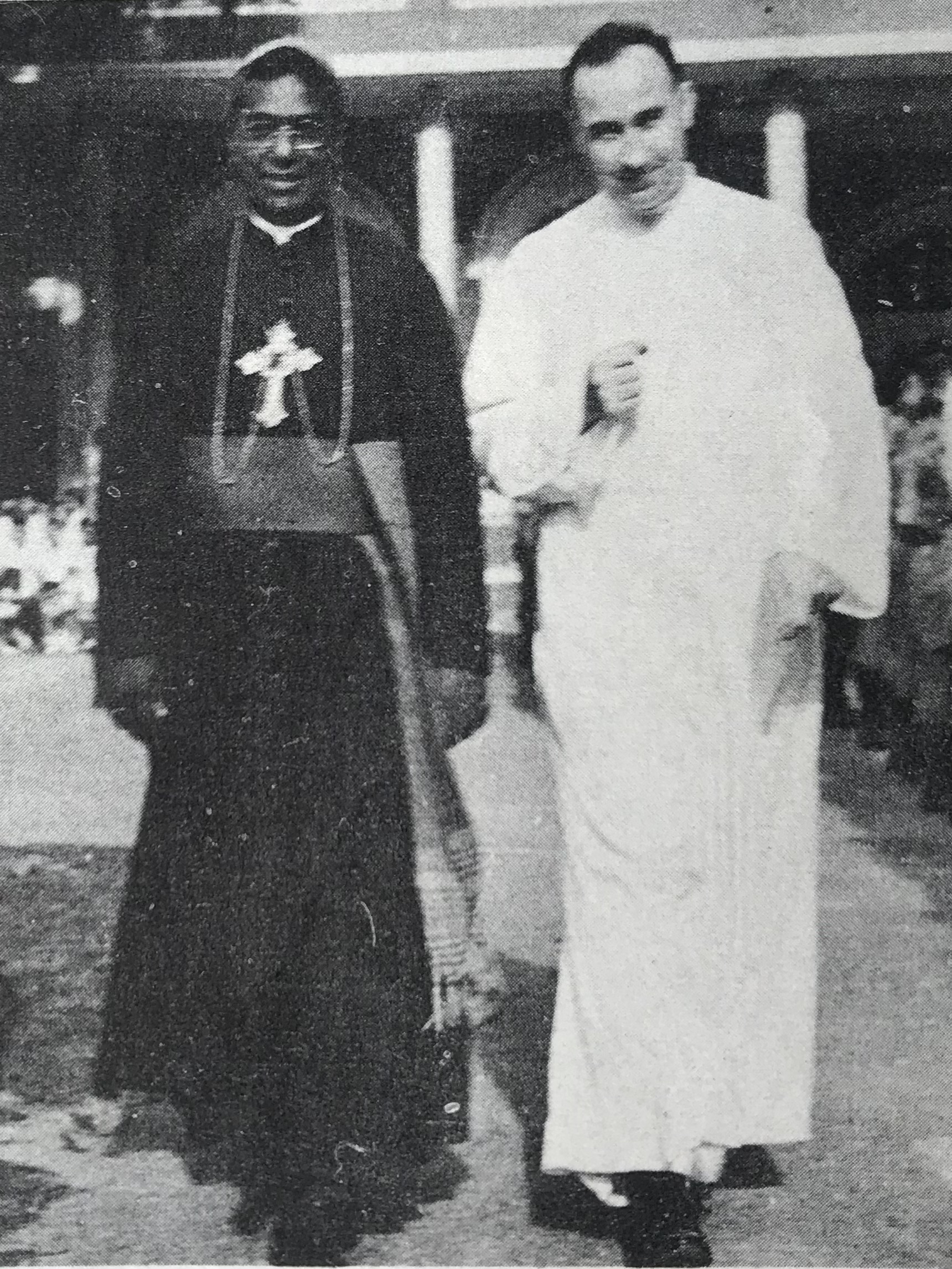
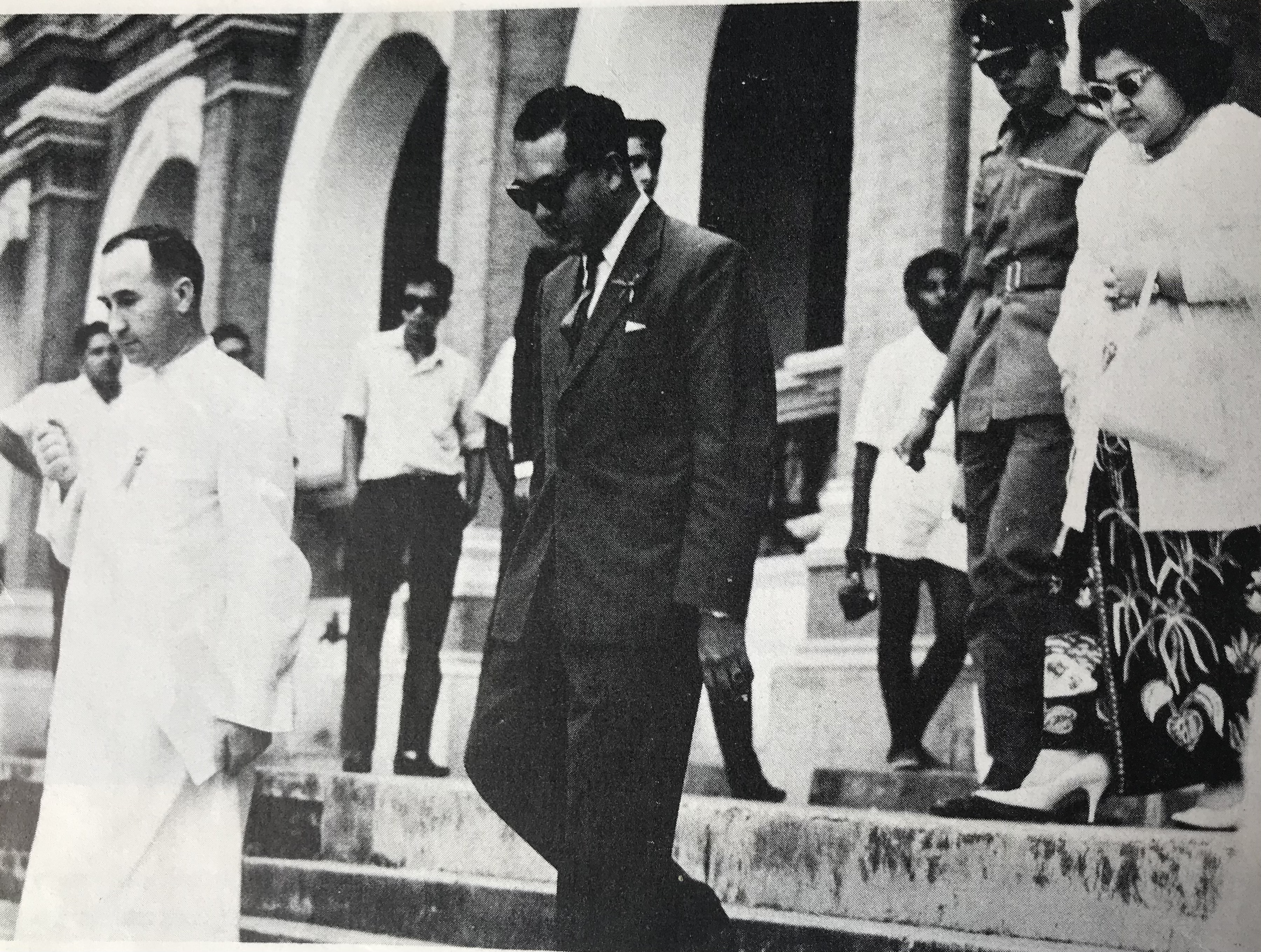
PICTURES ABOVE: I was in Standard Five when St John’s turned 60 and marked its Diamond Jubilee in 1964. These pictures from the Souvenir Album show SJI secondary boys having the best time, and principal Brother Joseph McNally with then Catholic Bishop Dominic Vendargon on the left, and with the Sultan of Selangor and Sultana who joined the celebrations.
For a long time after I left school, I did not know that it was Father Beurel, a French missionary with a streak of the gangster in him, who was the man behind the arrival of the Christian Brothers and IJ nuns who set up schools in Kuala Lumpur and all over Malaysia that educated hundreds of thousands, if not millions, over a century and a half.
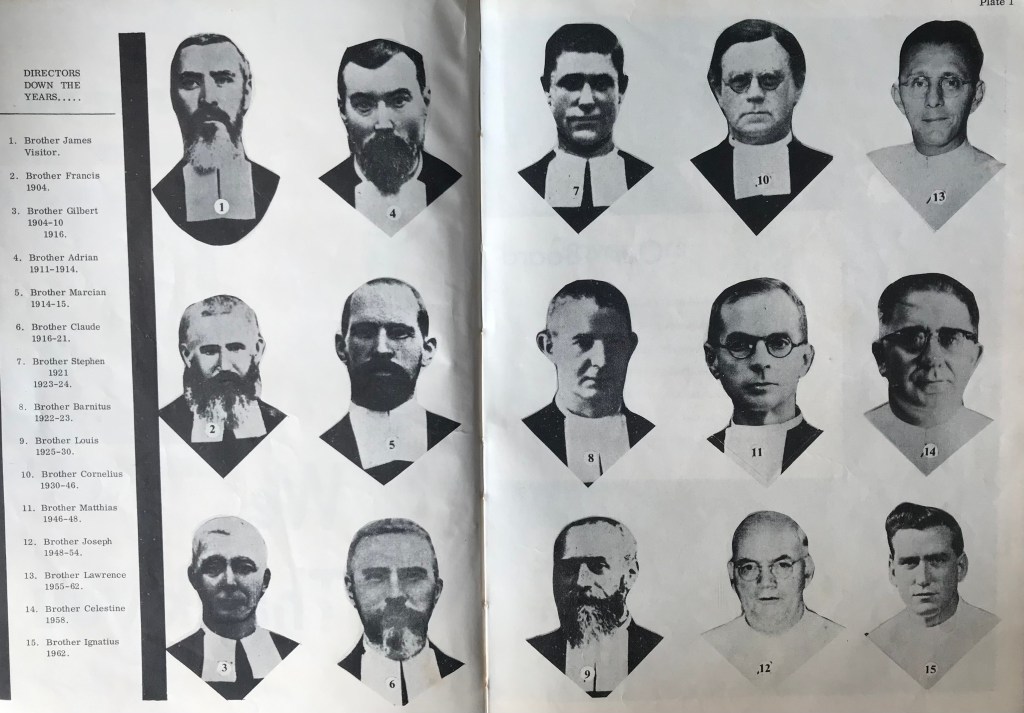
In 1980 I moved to Singapore, which has a network of La Salle schools as well. St Joseph’s Institution was in an area of Bras Basah strikingly like Bukit Nanas, unmistakably Catholic. The Cathedral of the Good Shepherd was across the street, and around the corner, the Victoria Street Convent was run by the IJ sisters. Unlike in KL, where St John’s and the convent are still functioning schools in the heart of the city, St Joseph’s Institution and the Victoria Street Convent, both protected national monuments, have since become an art gallery and an F&B leisure hub respectively, the schools having moved elsewhere in Singapore a long time ago. Only their facades, including the statue of St John Baptist de la Salle at the boys’ school and the convent’s chapel with its tall spire, are reminders of what these buildings used to be, and their connection to numerous other schools across Malaysia.
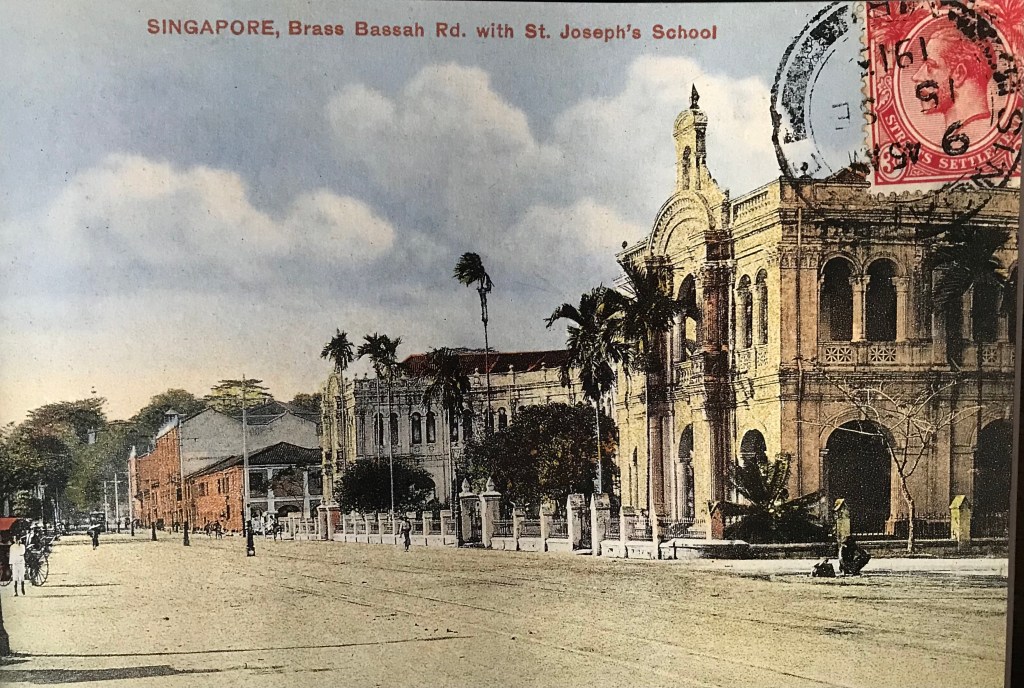
It was through SJI Singapore, where my wife taught briefly and which my son attended, that I came to know of the Frenchman Jean-Marie Beurel and his dogged efforts to persuade the Christian Brothers and IJ nuns to come all the way from Europe in the mid 19thCentury to set up schools. Over several years, he wrote letters of appeal, begged for donations, cajoled and twisted arms before the first Brothers arrived.
Without this man, there would be no St Joseph’s Institution or St Patrick’s School in Singapore, or St Xavier’s Institution in Penang, St Francis Institution in Melaka, St John’s Institution in KL, St Paul’s Institution in Seremban, St George’s Institution in Taiping, or St Michael’s Institution in Ipoh, or all the other La Salle schools. He also persuaded the IJ Sisters of St Maur to send the first nuns as well, and that led to all the Convent of the Holy Infant Jesus (CHIJ) convents in Malaysia and Singapore.
For all of us who attended these mission schools in Malaysia, Beurel is the critical piece of our shared story though his role is often ignored, or mentioned only in passing.

The red-haired Frenchman on a mission
Born in Brittany, France, on 5 February 1813, Jean-Marie Beurel was just 26 years old when he landed in Singapore as a Roman Catholic missionary priest in October 1839. There are only a couple of pictures of the Frenchman in his later years, but his passport, issued in 1846, described him as having red hair and an oval face. He belonged to the Paris Foreign Missions, the Missions Etrangeres de Paris (MEP) who had brought Catholicism to Singapore, and arrived 20 years after Stamford Raffles. Singapore was an early settlement already drawing a mixed bunch of people from everywhere.
Beurel was unhappy to find that although the Catholics had a plot of land along Bras Basah Road, on it stood only a small chapel and several houses. His first goal was to build a proper church, and he immediately went about raising funds for it. The ambitious project was fraught with challenges, including money troubles, tension and disagreement between Beurel and his bishop in Penang, and angry letters flew this way and that. He put his own money into the endeavour, asked well-off Protestants in Singapore for help, went to China and Manila to seek donations, and wrote to Queen Marie-Amelie of France for help as well. The church he blessed and opened in 1847 is today the Cathedral of the Good Shepherd, mother church of the Roman Catholic community in Singapore and a protected national monument.

As his dream of building a new church was nearing reality, Beurel was on to his next project. He became seized by a vision to establish a Catholic school in Singapore and from the start, wanted the Christian Brothers to take charge. The Brothers of the Christian Schools (FSC) was a men’s religious order founded in France in 1680 by John Baptist de la Salle and at the time it was already running more than 1,000 schools in Europe and the United States. Beurel started agitating in 1844, writing to the order’s superior general, urging him to look East and send men to help children in this distant part of the world. It was a slow process, not least because a letter sent by sea from Singapore took two months to reach its destination, and a reply would take another two, three months.
Beurel was impatient. He did not wait for confirmation from the superior general as he began raising funds for the Christian Brothers school in Singapore. The main initial cost would be to pay for the sea voyage of the Brothers who would come to Singapore. Beurel broadcast his plans by placing an announcement in the newspapers saying the Brothers would arrive to start a school from the chapel premises in Bras Basah, “asking no remuneration for their labours beyond what may be necessary for their food and dress”.
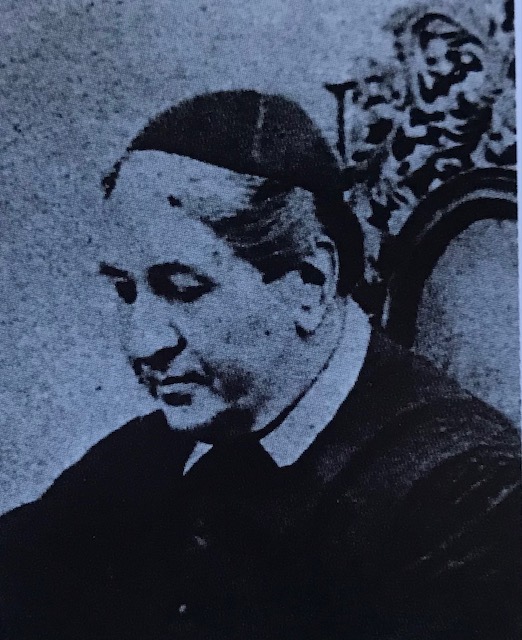
Beurel’s brief: The school should take in boys of all races and all faiths.
It is striking that from the start, this unabashed Catholic missionary described a Catholic school that would welcome boys of all races and religions. He wanted a school with a secular curriculum teaching “all that is taught in good French schools”. His advertisement in the Singapore Free Press in June 1848 set out his brief for the Christian Brothers in multiracial Singapore where people spoke different languages and belonged to different faiths:
“English, French, Chinese and the Malay languages together with the various branches of mathematics, book-keeping, drawing, etc, etc, etc will be taught in the School… (and) it will be open to everyone, whatever his creed may be; and should, for instance, a boy of a different persuasion from that of R. Catholics attend it, no interference whatever will take place with his religion, unless his parents or guardians express their wishes to have him instructed in the Catholic Religion. Public instruction will be given to RC boys either before or after the hours for school; but at all times the Masters will most carefully watch over the morals of the whole, whatever their religious persuasion may be.”
More than a century later I would go to St John’s Institution in Kuala Lumpur and join a school that took in boys of all races and religions, rich and poor. Although it was a Catholic school, catechism classes for Catholic boys were held before or after school hours. This was The Brief from Father Beurel in 1848 but, who knew?
The funds started coming in, but Beurel had not yet persuaded the superior general to send Brothers to Singapore. But Beurel did not tire of asking, and asking again and again. He used every opportunity, including the opening of the new church, to tell everyone that what Singapore needed was a Catholic boys’ school. He wrote a dozen letters to the superior general over four years and in January 1849, wrote yet again, imploring the superior general to send three Brothers. They would establish a school that would not only be a landmark institution in the region, but also allow Catholics to hold their own against the Protestants. (He was a Catholic missionary, he couldn’t help that…) Meanwhile, the Catholic community in Penang was also keen to have the Christian Brothers set up a school there.
The superior general’s reply arrived in June 1849, bringing good news that the Brothers would come. Meanwhile, Beurel also obtained permission to buy a nearby plot to build a convent. Nothing happened quickly though. More time passed, as HQ looked for English-speaking Brothers to send to Singapore. Impatient as ever, Beurel set off for Paris near the end of 1850, arriving there in March the following year. He used his time to finalise the group of Brothers and IJ Sisters who would return to Singapore with him, and kept up his fundraising as well. Six Brothers and four Sisters left Europe with him on the ship La Julie in December 1851, reaching Singapore only on March 29, 1852. One Sister who did not survive the long journey was buried at sea.
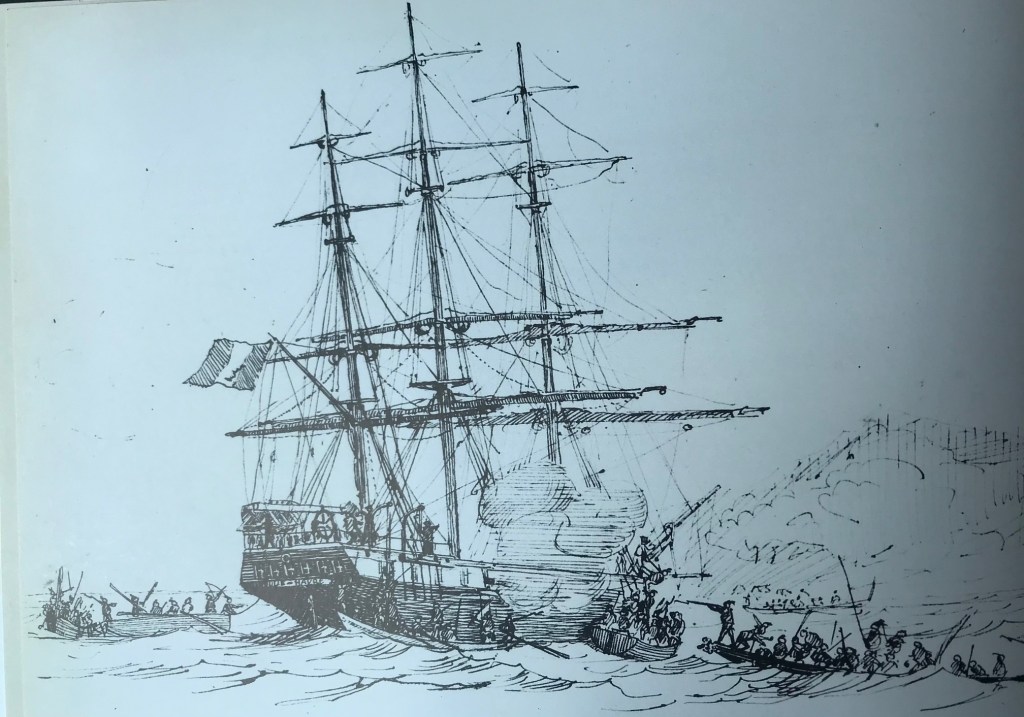
That was how Brother Liefroy Bajon, 42, a Frenchman, and two Irish Brothers who had emigrated to America, Gregory Connolly, 31, and Switbert Doyle, 57, came to Singapore to start the school Beurel had been trying to get off the ground for eight years. They began with 75 boys, holding classes in the chapel at Bras Basah. Within a year, there were 145 boys of different races and religions, and an attap-roofed hut had to be built as the chapel could not hold them all. Beurel had finally got his Catholic school run by the Christian Brothers, but there would be years of clashes and quarrels as the Brothers struggled with their difficult living conditions, the hot and humid weather, and having to adapt to the local food. But that’s another story.
The other three Brothers who arrived, Lothaire Combes, 24, Venere Chapuis, 30, and Jerome King, 23, went to Penang, where they started St Xavier’s Institution. The three Sisters also went to Penang and the first IJ convent opened there, not in Singapore. Two years later, in 1854, another group of Sisters arrived and took in girls at the Convent of the Holy Infant Jesus in Victoria Street.
The first Christian Brothers school in Singapore was called St John’s Free School, named after the founder of the Brothers’ order, St John Baptist de la Salle. As the number of students grew, new premises were needed. The cornerstone for the new school was laid on March 19, 1855, the feast of St Joseph, and from then on, it became known as St Joseph’s Institution. That allowed another grand La Salle school established in Kuala Lumpur half a century later, in 1904, to be called St John’s Institution, after St John the Evangelist.

By his early 50s, Jean-Marie Beurel was in poor health. Disabled by a stroke, he returned to France, where he died on 3 October 1872, aged 59. He had spent half his life in Singapore, and by bringing the Christian Brothers and IJ Sisters, influenced the education of millions of boys and girls not only in Singapore and Malaysia, but also in Myanmar, Sri Lanka, Vietnam and the Philippines as the orders expanded in this part of the world.
As an old boy of a La Salle school, I wish more of us knew Beurel’s story and the role he played in delivering to us the education we received. If you look in the Cathedral of the Good Shepherd in Singapore, you’ll find a modest tablet on a wall remembering Jean Marie Beurel and describing him as a man “who did many good works for the glory of God and the saving of souls”.
Too brief a summary, of one extraordinary life.
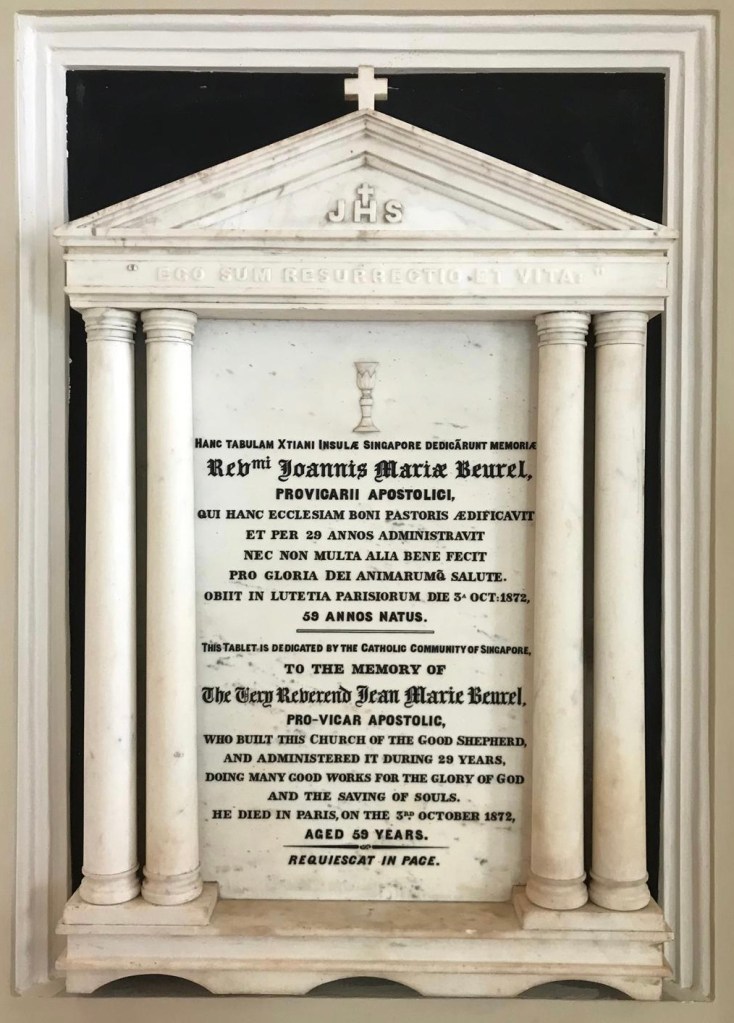
Sources:
Living The Mission, The SJI Story 1852-2002, Hedwig Alfred, Archipelago Press, published to mark the 150thanniversary of St Joseph’s Institution, Singapore.
The Good Shepherd: Restoring God’s House, Archdiocese of Singapore
St John’s Institution Diamond Jubilee Souvenir Album,1904-1964
Websites of the Brothers of the Christian Schools

Thanks for this Alan.
I realised Beurel’s role in the establishment of Catholic education in Singapore while working on ‘Living the Mission, The SJI Story’. In 2002, the 150th anniversary of SJI I proposed that the new library at SJI be dedicated in his honour. It came to be called, The Beurel.
LikeLike
Dear John, thanks for reading and for this note. It’s wonderful that you managed to get Beurel honoured at the St Joseph’s Institution library. It’s hard to read about his efforts and not wish more was done to recognise him. He should be a saint! Countless miracles, easily verified, among the havoc kids educated at La Salle and CHIJ schools everywhere!
LikeLike
He deserves a bronze statue in the grounds of the Cathedral.
LikeLike
What an enlightening history lesson for those of us who are not familiar with these facts.
I’m an Old Boy of St. Francis’ Institution, Malacca that is recognised as the second oldest Lasallian institution in this country.
It started as St. Mary’s School by the Catholic Church in 1880 and due to dwindling attendance and other reasons, was handed over to the La Salle Brothers in 1902 who renamed it as St. Francis’ Institution at its present site.
Today, we are still one of the top performing schools in the state that lives up to the Legacy of our Patron Saint.
LikeLike
Thank you for reading and replying Francis. My father and his brothers attended SFI before World War II after their parents passed away. On a visit to Melaka a couple of years ago I had a good old walk around your school, and found its gem of a chapel. It was a school day and nobody stopped me, but I must have looked like I belonged!
LikeLike
Hi Alan, nice article that brings back fond memories. I was in La Salle Sentul from 1950 to 1956 and in St John’s from 1957 to 1963. Interacted with few of those Brothers, especially Brother Lawrence and Brother Joseph McNally, who i also met again in Singapore in the late 1980s.
Cheers and greetings.
Brian Gomez – been residing in Sydney since 1974.
LikeLike
Hello Brian, thank you for reading and getting back to me. A railwayman’s son, I was born in Sentul, baptised at St Joseph’s Church, and had several schoolmates from La Salle Sentul who followed in your footsteps and came to SJI too. Best regards.
LikeLike
Hi Alan and thank you for this.
With your permission, I would like to upload this article to the various St Xavier’s FB pages.
The school is working on its heritage centre at the moment and this would be an excellent addition.
Best regards from a grateful fellow LaSallian.
LikeLike
Dear Valentine, of course, please go ahead. My stepfather attended St Xavier’s Institution a century ago and he’d be happy too. Thank you and best regards, Alan.
LikeLike
Hi Alan, a little belated comment about the Saints school.
I have been a Saints boy all my school life.
It began in 1949 when at age seven, I enrolled in Primary 1 in St Xavier’s Inst in Farquhar St in Penang. The school was housed in attap sheds in a large field by the sea. Next door was the Convent of the Holy Infant
T w beautif ul St John’s school was bombed to
LikeLike
Hello Philip, thanks for reading and responding. Looks like the last part of your message is incomplete.
aj
LikeLike